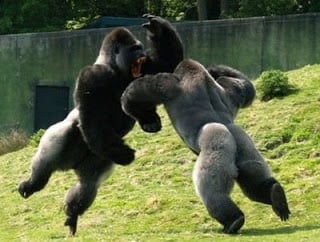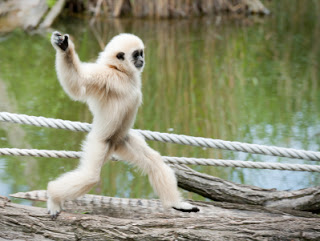
In a typical training week, some of our athletes will lift weights only 4% of the time, 10 minutes of their total weekly volume. We are not talking about young kids either, these individuals are usually elite high school, college, or professionals. However, there is a similarity between these prescriptions. Their force plate testing resembles a gorilla. They are large human beings with exceptional LOAD, a force plate measurement usually associated with weightlifting prowess. The goal is to change these primates to their ape relatives, gibbons, smaller animals known for their agility and speed. Due to the use of their arms, they are able to jump up to 26 feet at speeds up to 35 miles per hour. This ability to produce force over longer periods of time (DRIVE) makes them an equally formidable opponent, and can be a valuable asset to you as an athlete, especially if you are a gorilla.

Too often, strength is viewed as just lifting weights, an important avenue if it is what you need. But strength is simply the ability to generate force, whether it is a squat, throwing a ball, or jumping. Jumping is one of the best training exercises to improve DRIVE (see Sparta Point 1/27/10). To take it a step further, jumping off one leg is even better because the challenge of balancing forces you to spend even more time loading and unloading as you apply force into the ground.
We use a series of single leg jumps, emphasizing the 2 major planes in which they occur in sports, horizontal or lateral. We use the horizontal jump in particular to emphasize DRIVE because the body’s joints allow a greater range of motion in this plane due to the hinge nature of the knee joint. This greater range of motion again allows more time in the loading phase. The other critical component to emphasize DRIVE is the arm technique.
A 2010 study out of Loughborough University in the UK, found that the use of both arms simultaneously maximizes this DRIVE, or impulse, compared to using the arms asymmetrically, like running. The double arm technique also allowed the athlete to produce more work at the single leg pushing into the ground, and even more work at the shoulder joints, much like a gibbon swinging through the trees.
Below is a video of the technique we use for horizontal hopping on one 1 leg. All of our athletes will perform this movement once a week, focusing on proper landing mechanics on 1 leg. However, gorillas, with high LOAD and low DRIVE, will perform additional single leg jumps that emphasize more distance using the arms, regardless of their landing mechanics.
Without a force plate, you probably know if you are more of a gibbon or gorilla, so the question becomes if you use more jumps or lifting for your strength. If you are jumping, use both arms, because unlike a gibbon you don’t have to worry about grabbing onto a tree branch.